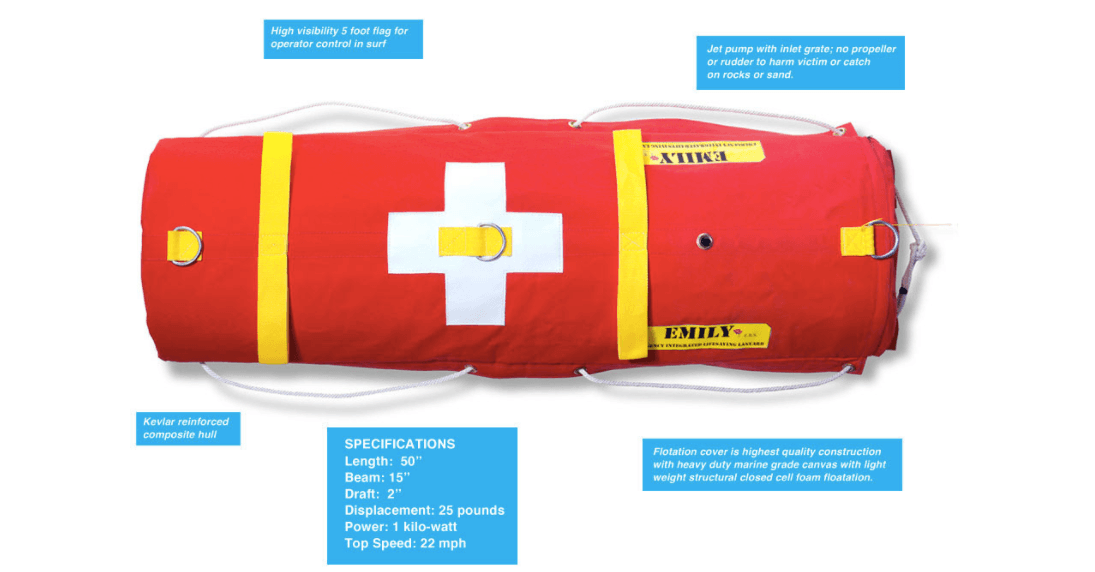It’s a buoy, it’s a life raft, it’s Emily — the robotic craft that’s saving refugees off the coast of Greece
EMILY is a livesafing device being used to safe refugee and migrants found at sea.
Last year, rescue workers began using a vessel called Emily to pull stranded refugees from rough waters near the Greek island of Lesbos. Part buoy and part life raft, Emily helped more than 240 asylum seekers to safety in its first 10 days of use.
“It's essentially a remote-controlled rescue boat that's about four feet long, and it looks like a cylindrical surfboard, but it has the power of almost a jet ski,” says Lauren Silverman, a science and technology reporter at KERA News in Dallas who has covered Emily.
Emily — short for Emergency Integrated Lifesaving Lanyard — was designed by Tony Mulligan, CEO of the maritime robotics company Hydronalix, and can travel at a top speed of 22 mph. Rescue professionals have been using Emily in places like Los Angeles since 2010, Silverman explains, steering the craft from shore or aboard a boat. Now, roboticists are trying to make Emily even more effective in large-scale crises like refugee shipwrecks — by making the craft more autonomous.
Read more about Emily, the 'robotic lifeguard'
“The idea is to make it possible for someone to call off the coordinates of a victim far away, and have a computer convert those — send them to GPS, to the robot, so that the robotic raft can arrive and help someone in the water, while the lifeguard can tend to people who need help elsewhere,” Silverman says.
The effort is being led by Robin Murphy, director of the Center for Robot-Assisted Search and Rescue at Texas A&M University, which helped deploy Emily in Greece last year. “She's put robots in some of the biggest disaster zones in the last decade: in Louisiana after Katrina, above mudslides in Washington State, into rubble at the World Trade Center,” Silverman says.
And Murphy and her team aren’t just working on ways to make an autonomous Emily work better for rescue professionals. They’ve also realized how scary it could be for shipwreck survivors to see a bright buoy motoring across the ocean, straight towards them.
“Emily can come at you at full speed ahead and it can hit you and it won't hurt you — it's designed not to — but you're not going to be happy,” Murphy told Silverman. “And if you're already stressed, this is not going to make it.”
To that end, Murphy has a few ideas for making the rescue process gentler. She says thermal cameras can help Emily spot people in the water and slow down before arriving at their location, even turning itself the long way for an easier rescue.
Then, the idea goes, refugees can grab on — and let their strange-looking lifeguard carry them to shore.
This article is based on an interview that aired on PRI's Science Friday.
